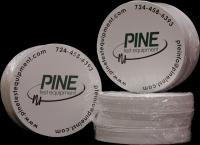“What in the world is going on?” sighs an exasperated lab manager as he finishes reviewing the report he just received. “Why don’t our numbers match?”
A thorough investigation of the testing process in both labs uncovers no differences. Everything was done according to the specified procedure. One seemingly insignificant difference identified was the supplier of the paper disks used. But surely that couldn’t cause the difference. Or could it?
Research has shown that paper disks do affect compaction.
An August 2004 FHWA report entitled The Effect of Paper Sheet Thickness on the Compaction Effort in the Superpave Gyratory Compactor by Al-Khateeb and Harman compared paper disks from two suppliers and concluded that one generated specimens with 0.34% higher air voids.
Pine Instrument Company published a paper in March 1999 entitled An Investigation of the SGC “Paper Disk Effect”. “The root cause of the “paper disk effect” appears to be subtle differences in the friction between various kinds of paper and the [end] plates. Compaction of smaller size mixes appears to be more sensitive to such variations in friction.”
Pine recommends always using the same paper disk source. Different suppliers may apply different surface coatings causing varying levels of friction between the end plate and the paper disk. Differences in friction may lead to differences in air void content. Always using the same paper disks supplier eliminates a possible source of variability in specimen density results.




